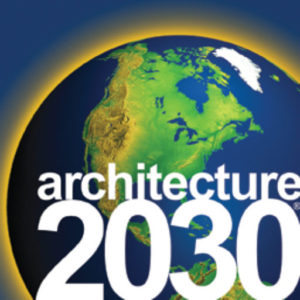Sonoma State University

Sonoma State University
Student Recreation Center
Rohnert Park, CA
Architect: LPA
Sustainability was a driving force in the design of the Sonoma State University Student Recreation Center. Approximately 70% of the building is naturally ventilated and cooled; the building is “night flushed” of all hot air and utilizes interior thermal mass to moderate daytime interior temperatures. Vents located in the lobby skylight and under built-in exterior window seats assure adequate air movement and natural ventilation throughout the lobby area. An indirect evaporative cooling system is used in the offices, multipurpose and fitness room and a de-stratification/ventilation system is employed in the small gym. Along with proper orientation and a well insulated exterior skin, the building is 43% more efficient than that California code (Title 24), with an energy savings of approximately 339,000 kWh/Yr. As Title 24 is one of the most stringent building codes in the US, the building is well below the 50% operating energy consumption reduction target called for by The 2030 Challenge. The project was designed to meet a LEED Silver certification rating from the USGBC.
University of California, Berkeley
The Early Childhood Education Center (ECEC) at UC Berkeley is an example of using an integrated design process to achieve sustainable building design goals. Comprehensive collaboration between the user group, the design team, and the project delivery team produced a highly-sustainable building that satisfies programmatic requirements while adhering to construction schedule and budget. The building is largely illuminated with natural daylight introduced via skylights and south clerestory windows to create a comfortable, healthful environment while reducing electricity use. In addition to providing the building’s young occupants with a healthy indoor environment, the ECEC also promotes stewardship of the natural environment. Examples of sustainable resource use at the ECEC include:

University of California, Santa Barbara
Bren Hall, School of Environmental Science and Management
Architect: Zimmer Gunsul Frasca
• Diversion of over 75% of construction waste from landfill into recycling and reuse venues
• Low flow fixtures reduce indoor water use by 25%
• Landscaping water is use reduced by 61%
• Energy-efficient design reduces energy use to 26% below Title 24 energy conservation standards
• Passive solar controls reduce energy consumption
The building is expected to receive a LEED-NC Silver rating from the USGBC, and was honored with a Best Practice Award for Integrated Design Process at the 2006 UC/CSU/IOU Sustainability Conference.
Los Angeles Community College
Capping a year of local leadership in promoting sustainable building practices, the Los Angeles Community College District (LACCD) was honored in December 2006 with the United States Green Building Council – Los Angeles Chapter’s (USGBC-LA) Sustainable Future Award.
The LACCD is currently undertaking the largest public sector green building program in the United States, funded by the $2.2 billion Proposition A/AA Bond Program. In April 2006, the LACCD opened its first green building, the Maintenance and Operations (M&O) building at Los Angeles Valley College. The M&O building earned Leadership in Energy and Environmental Design (LEED™) certification from the US Green Building Council because it incorporates a number of features designed to reduce energy and water consumption.
In October 2006, the LACCD further illustrated its commitment to sustainability with the announcement of its plan to be the first community college district in the nation to “go off the grid” by generating its own power for all energy needs. The LACCD is currently planning to install photovoltaic (solar energy) panels that will produce enough electricity to meet daytime power needs at each of its nine colleges.
The Los Angeles Community College District is one of the largest community college districts in the country, educating more than 110,000 students at its nine colleges each year. The District’s strong leadership in its adoption of sustainability practices has been recognized by numerous organizations, including the California Climate Registry, Global Green USA, and Flex Your Power.
University of California, Santa Barbara

University of California, Santa Barbara
Bren Hall, School of Environmental Science and Management
Architect: Zimmer Gunsul Frasca
The University of California, Santa Barbara boasts the only LEED Platinum laboratory building in the US. In constructing Bren Hall, home to the interdisciplinary graduate school of environmental science and management, 100% of the demolition waste and 92% of the construction waste were recycled. The building, which gets 10% of its power from a photovoltaic system, was designed by Zimmer Gunsul Frasca, an environmentally conscious firm that also designed the adjacent Marine Science Building. The Marine Science Building is UCSB’s second LEED for New Construction certified building and is 25% more energy efficient than California building codes require. Both projects have purchased wind energy to power the buildings for two years. The university has also signed an agreement with the USGBC to use LEED for Existing Buildings ratings to LEED certify 25 of its existing buildings over the next five years. One building, Girvetz Hall, has already been certified.
California Polytechnic University at San Luis Obispo
In June 2005, California Polytechnic’s Sustainable Environments minor received the AIA COTE’s top award for “ecological literacy.” Cal Poly also offers Sustainable Architecture as a graduate study program within their Masters of Science in Architecture degree. The university’s dedication to sustainable efforts is further exemplified in the numerous courses offered in its sustainability catalog.
The Renewable Energy Institute at Cal Poly has also partnered with the California Integrated Waste Management Board to promote sustainable environmental design principles in higher education and industry continuing education programs. Their project, Sustainable Environmental Design Education (SEDE), provides a curriculum model for teaching sustainable design practices and lists green programs and campuses.




